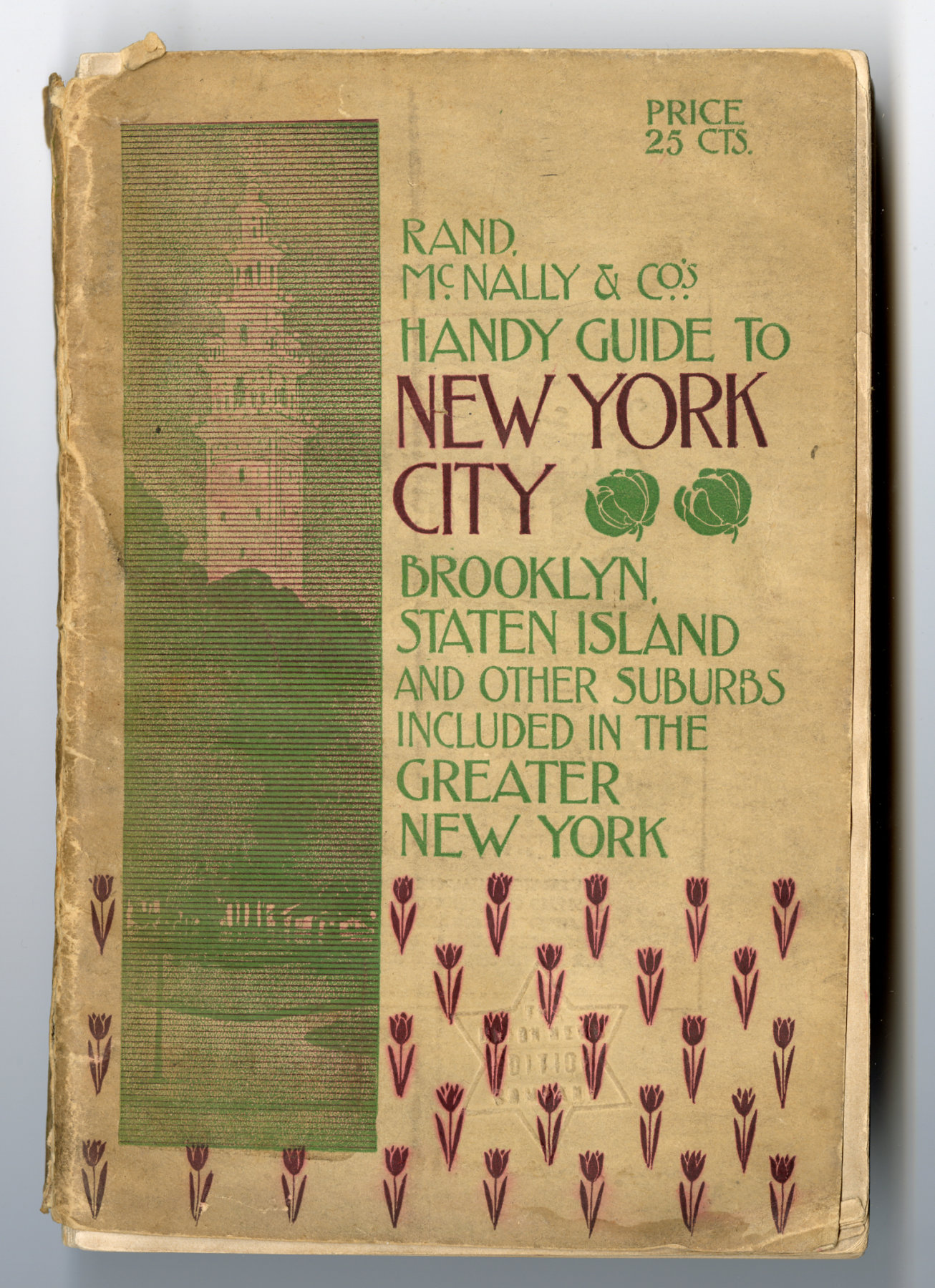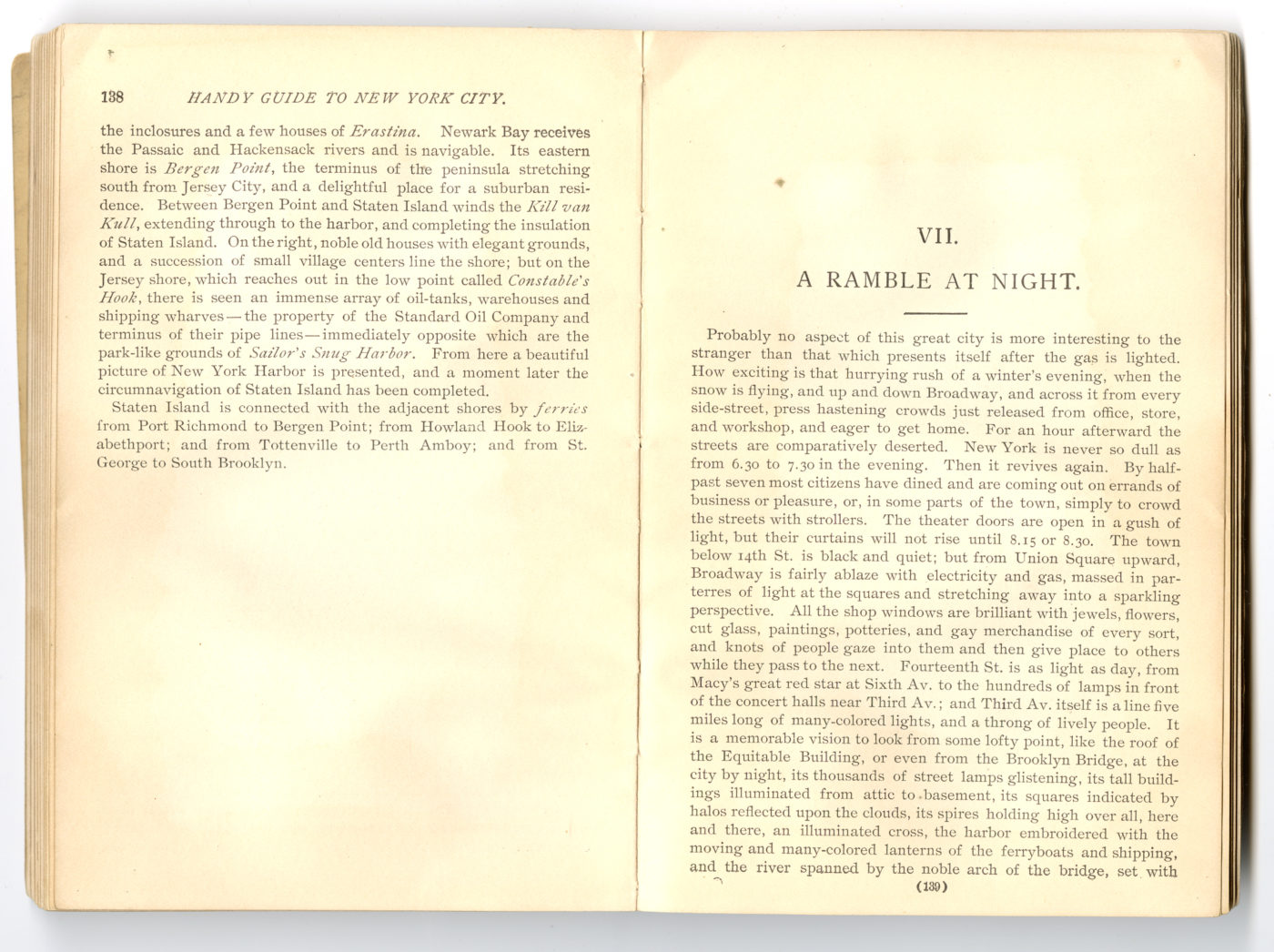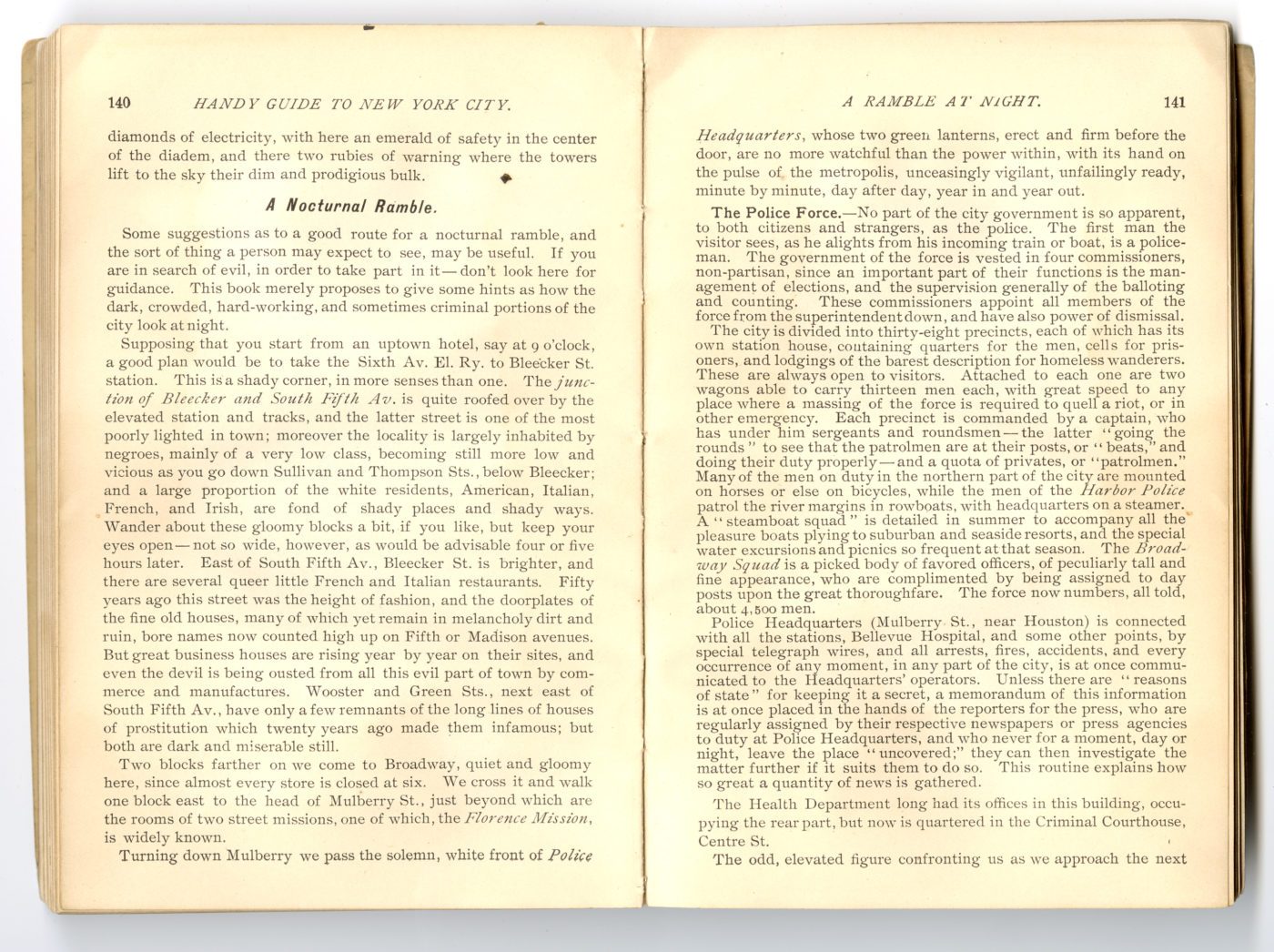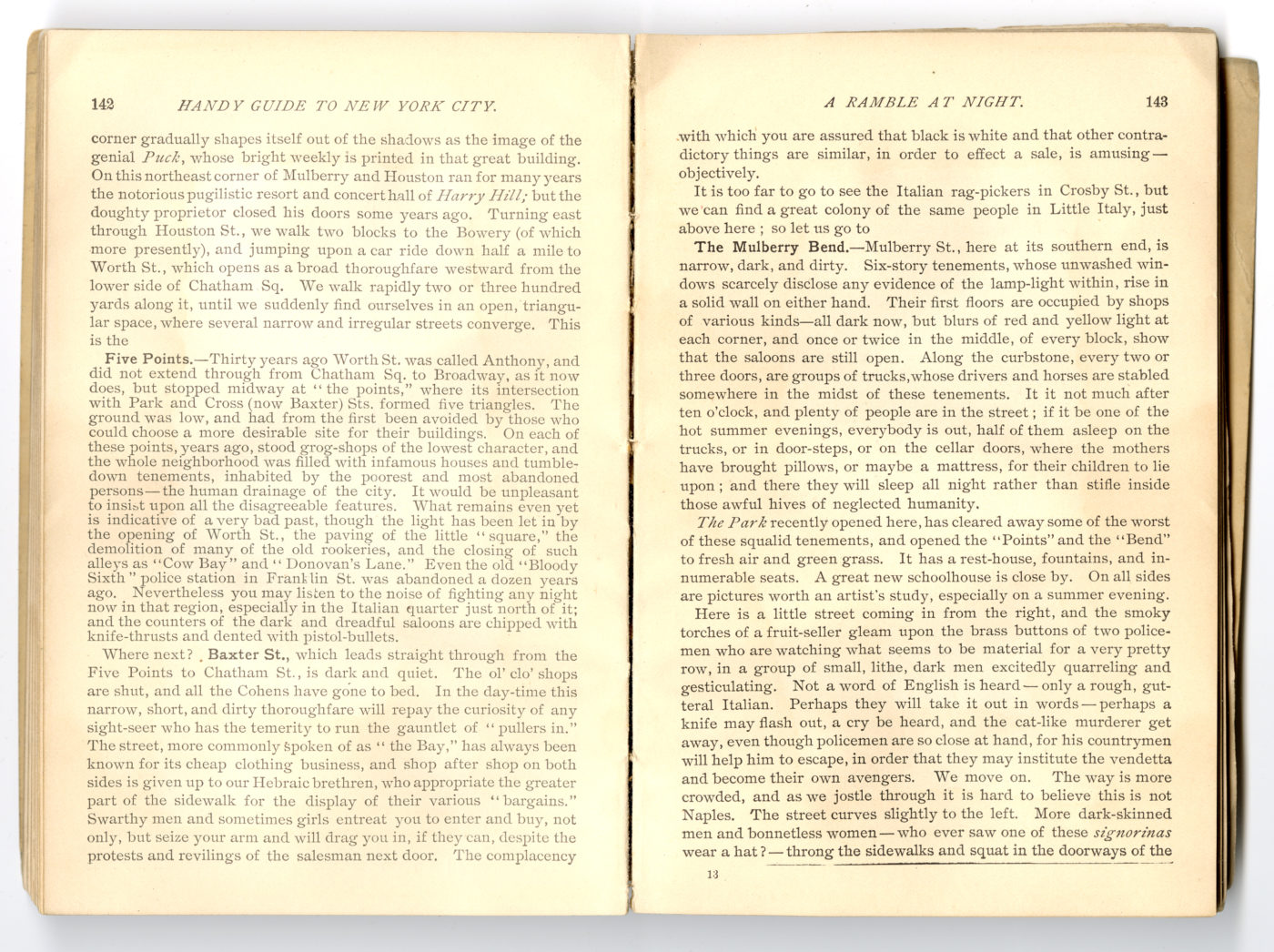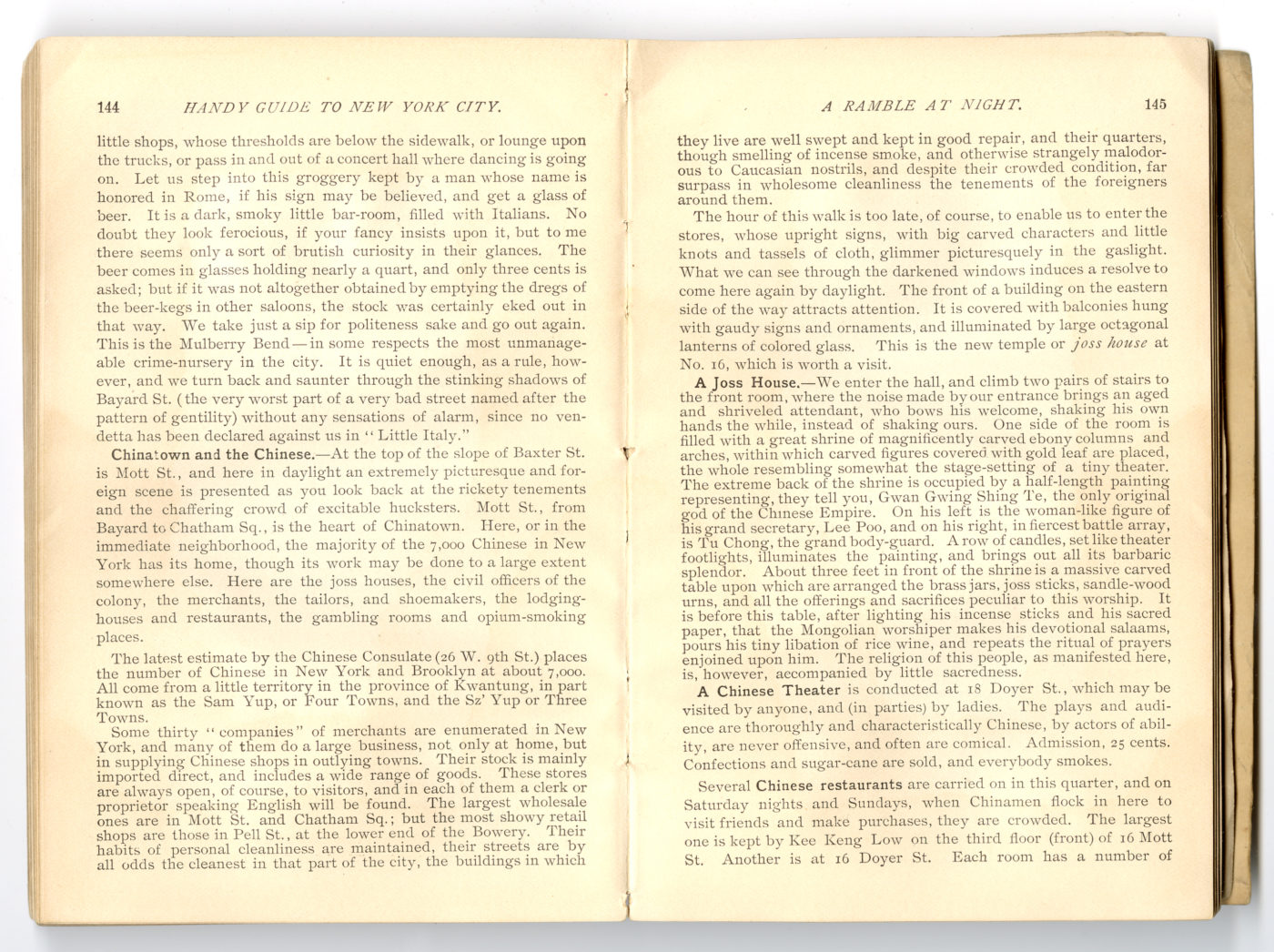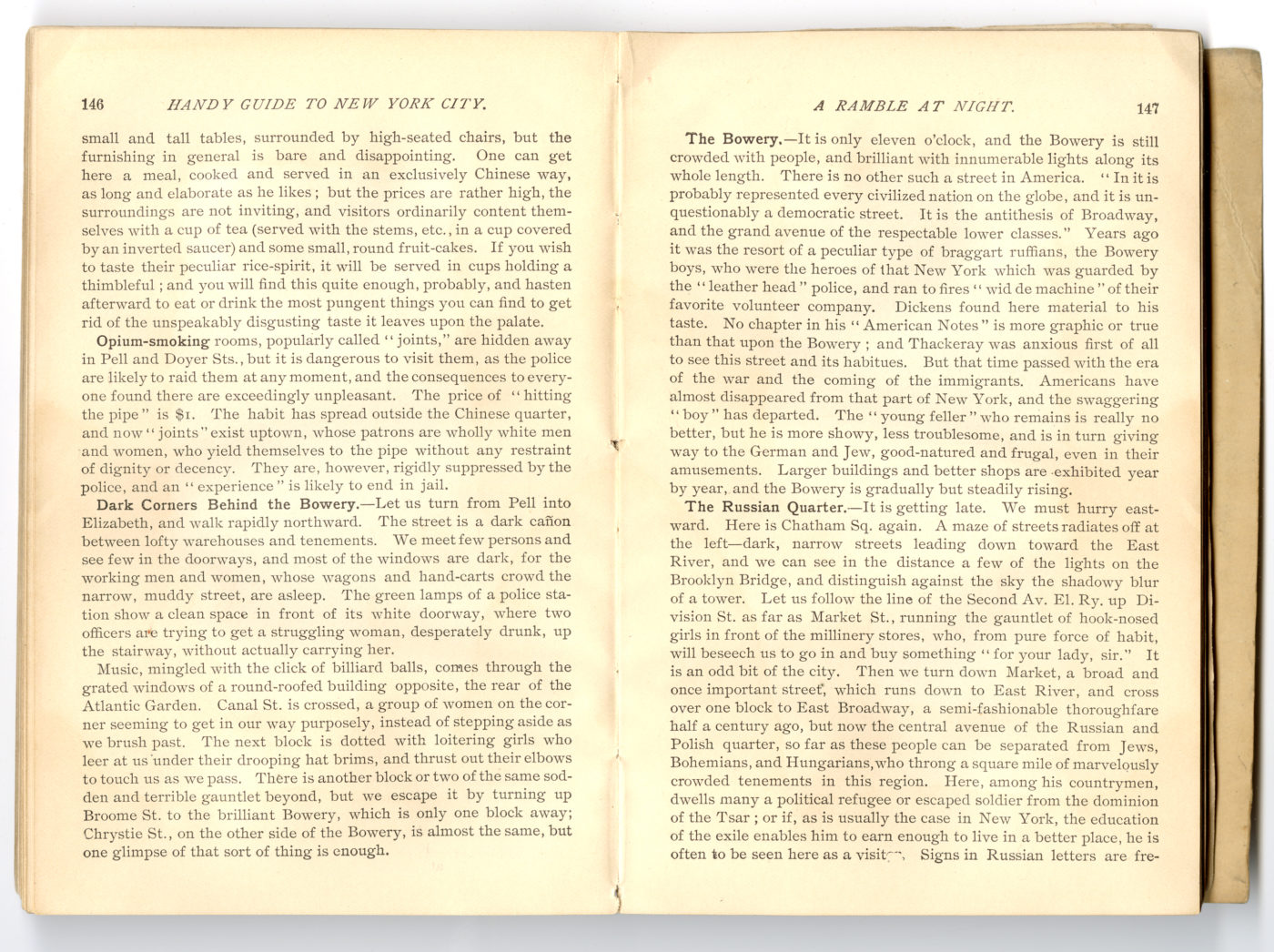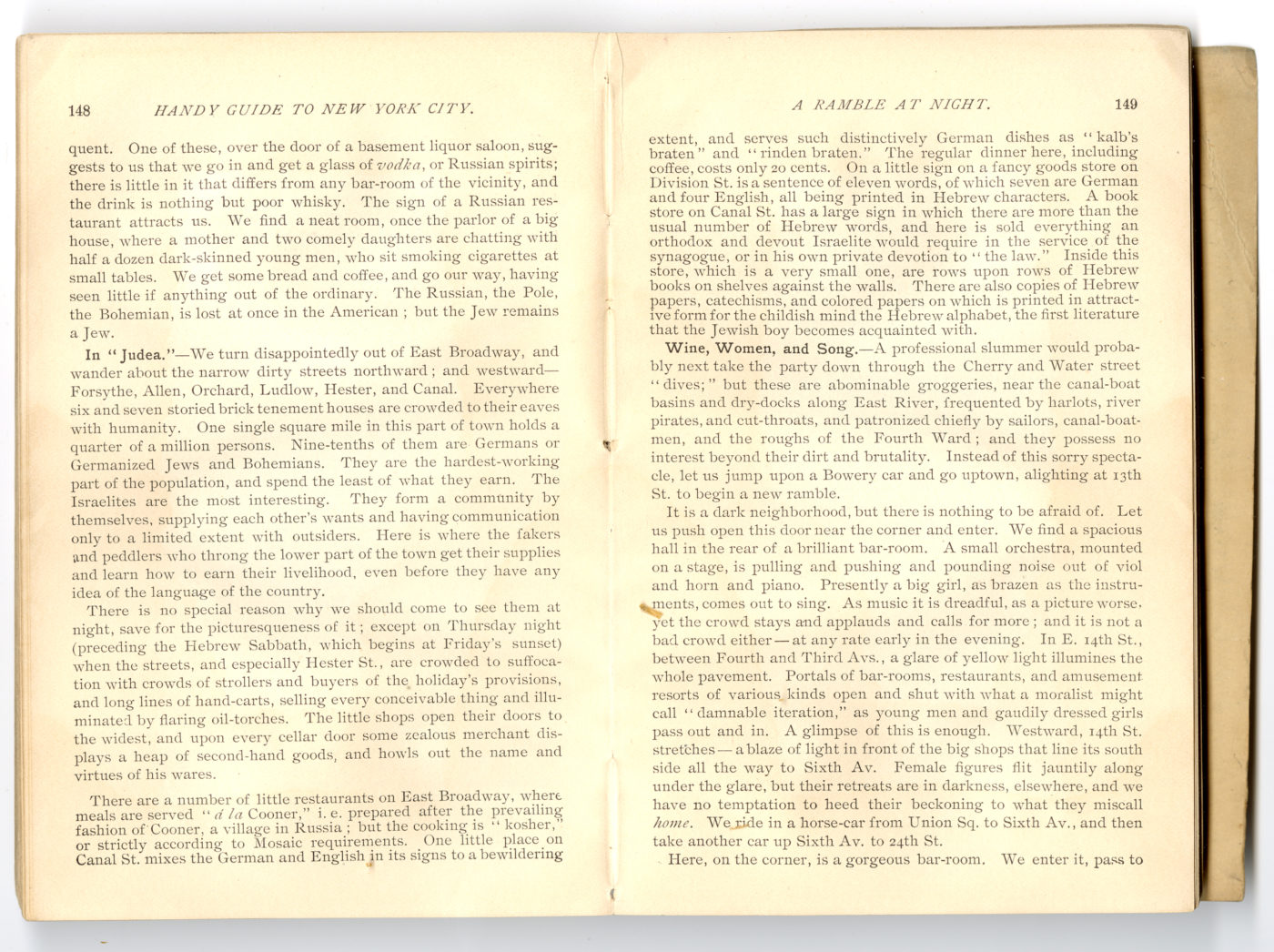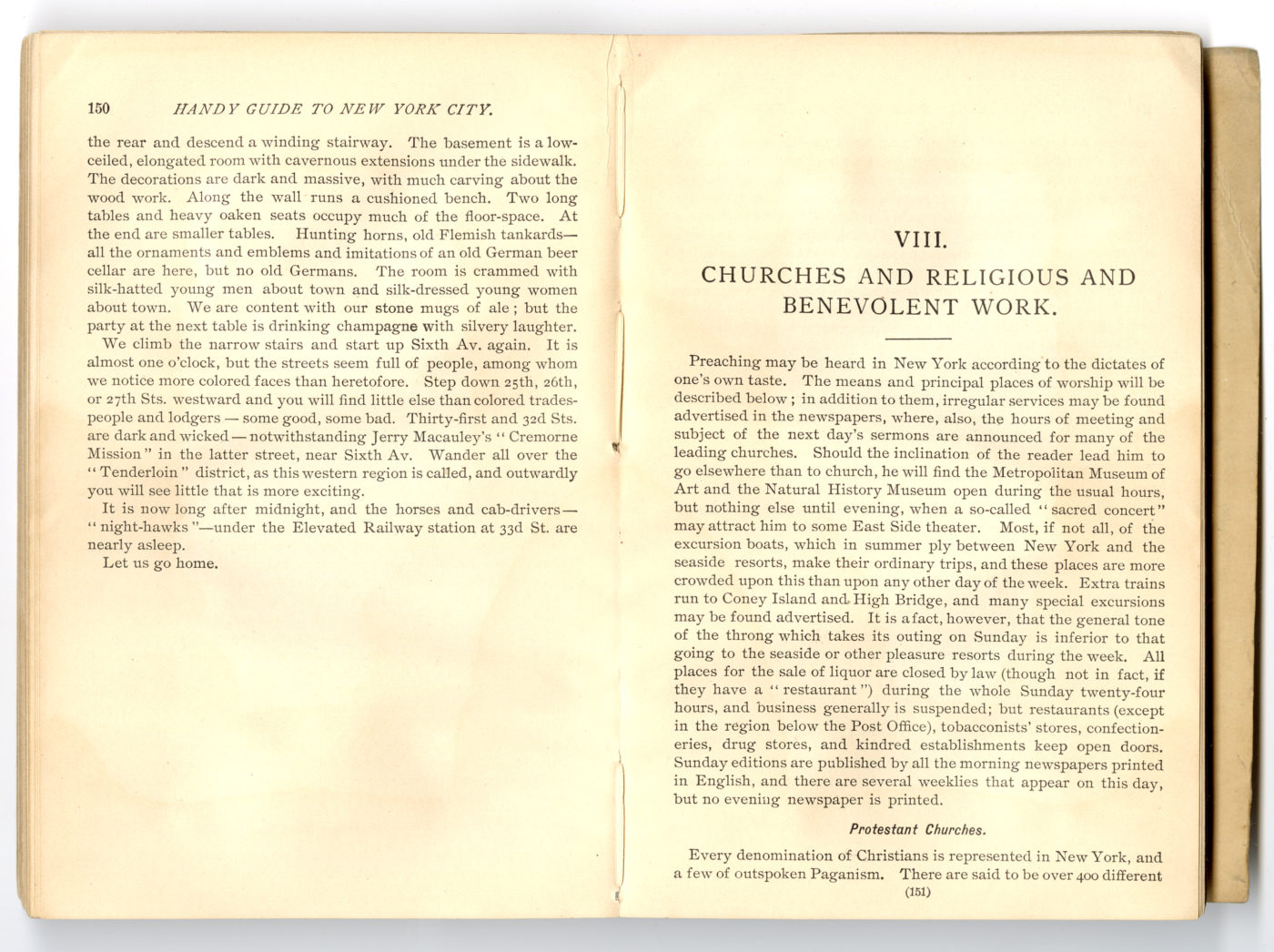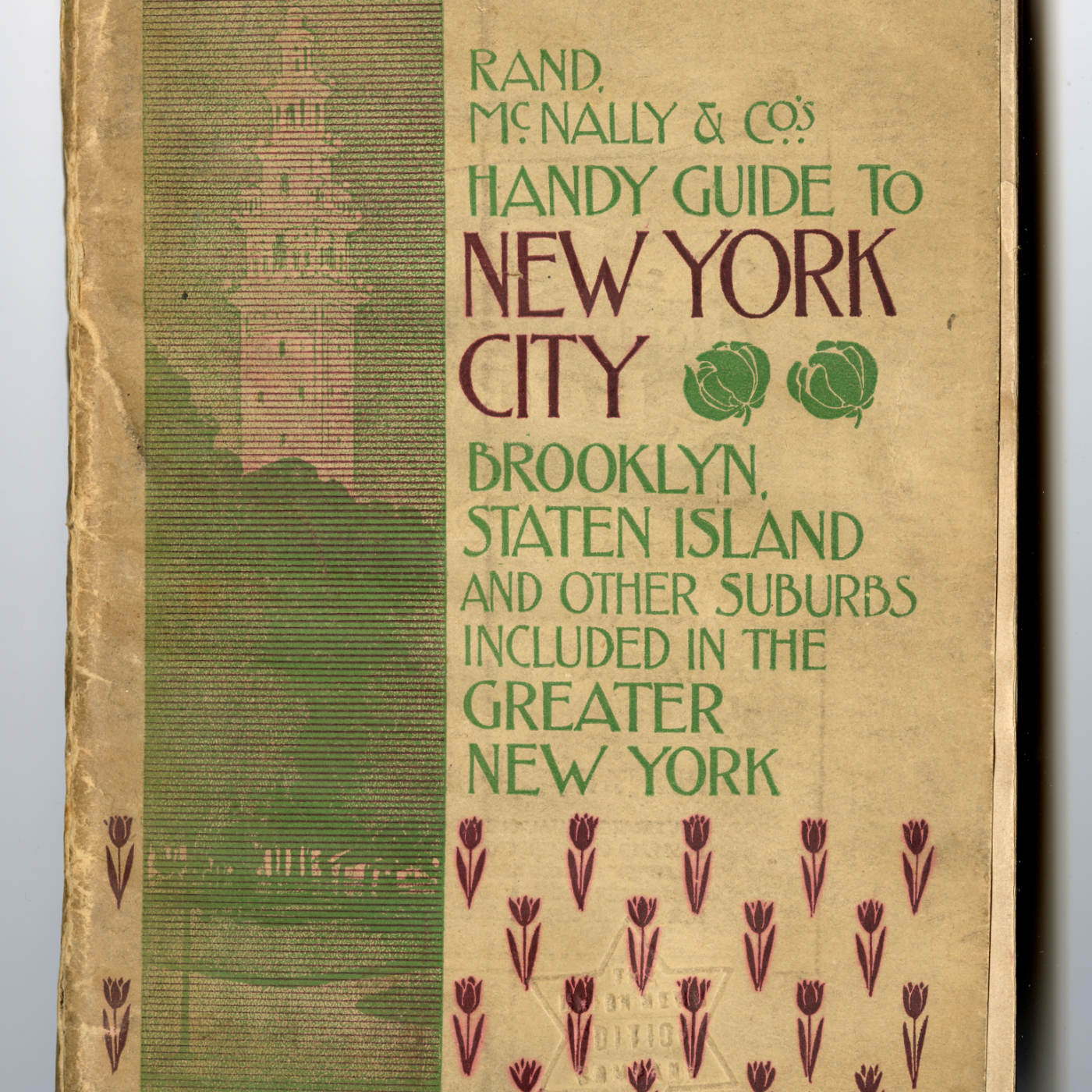For this week’s acquisition story, we feature another donation from our generous Board Secretary Roy Delbyck: a copy of the 1898 edition of Rand McNally Guide to New York City (Union News Edition). Most people know the Rand McNally name through their paper road maps and travel guides. The contents of this book reflect their experience in guide materials, featuring a landmarks index and fold-out map to assist with navigation around the city. This book and all its contents cost 25 cents, which is approximately 6-7 dollars in today’s money. While the book features interesting factoids, features, and foods from all across late 19th century New York City, the main draw for MOCA is the chapter that features our personal favorite NYC Chinatown. It gives a glimpse of Chinatown in 1898 in addition to its boundaries and neighboring communities, albeit from the lens of an outsider looking in, with all their biases of a culture foreign to their own. Here, we will feature some of the interesting highlights of the text and also provide the full scans below for anyone interested in reading it in full.
Included in chapter VII “A Ramble at Night”, Chinatown becomes a part of the writer’s journey in search of adventure on a cold winter night. The chapter begins with a preamble that sets the scene for a hypothetical night out in the lower parts of Manhattan and begins with a description of the more “shady” neighborhoods, which quickly moves on to describe the police force and the old Police Headquarters building at 240 Centre Street, right by MOCA.
The narrative moves on to describe specific locations such as Five Points, Baxter Street, and Mulberry Bend, all of which are described in one way or another as dark, dirty, and full of tenements. It is after these passages that we come to the section entitled “Chinatown and the Chinese”, the historic Chinatown is described as located around Baxter and Mott with a population of roughly 7000 Chinese. Based on the writer’s research on the Chinese population, he describes the majority of the Chinese to be from the province of Kwantung (aka. Caton or Guandong), and hailing from either the four counties (Siyi or Sze Yup) or three counties (Sanyi or Sam Yup). Unfortunately, the writer mistakenly switches the translations of the two county terms and describes “Sz’ Yup” as “Three Towns” and “Sam Yup” as “Four Towns”. In this section, he also makes a point to emphasize the cleanliness of Chinatown compared to the neighboring areas.
The next location the writer highlights is the “Joss House”, a term used to describe Chinese temples of worship. Here, he describes the interior in addition to the prominent gods featured in all its “barbaric splendor”, such as the “Gwan Gwing Shing Te”, which is perhaps a rough translation of Shangdi, although we are not too sure. He goes on to describe the entire process of worship as demonstrated by the temple attendant as being “accompanied by little sacredness”.
There is also a brief description of the old Doyers Street Chinese Theater, with the cost being noted as 25 cents and open to all, including ladies “in parties”. The writer also makes a note that “confections and sugar-cane are sold, and everybody smokes”.
Following the theater description, we move on to his writing about Chinese restaurants. The writer notes that the largest of the Chinese restaurants at this time was Kee Keng Low on the third floor of 16 Mott Street, which is now occupied by Kuomintang of China in America on that same floor. He describes the atmosphere as uninviting and bare, but the restaurants cook and serve meals in “an exclusively Chinese way, as long and elaborate as he likes”, but thinks the prices are rather high. There is also particular mention of the Chinese rice spirit, which is probably what we know now as Baijiu, which is not to the liking of the writer as it leaves an “unspeakably disgusting taste”. I think many readers will agree that Baijiu is an acquired taste…
For the final segment on Chinatown, the writer describes Opium-smoking establishments that are hidden away in Pell and Doyers Streets. He recommends people avoid these “joints” as they are often raided by the police but notes that the price to smoke is $1, or about $24-28. Additionally, the guide notes that Opium-smoking has spread out from the Chinatown area and into uptown, “whose patrons are wholly white men and women, who yield themselves to the pipe without any restraint of dignity and decency”.
